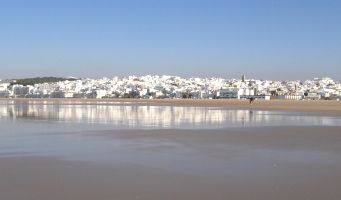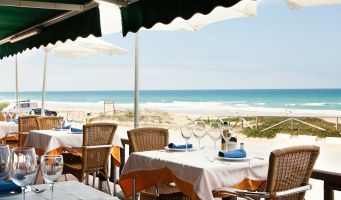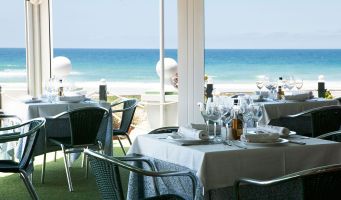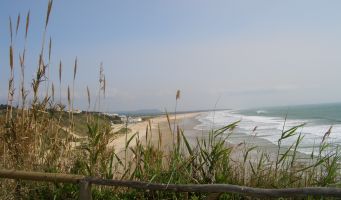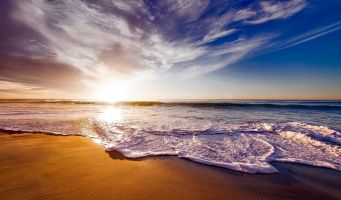
Places worth seeing
Fantastic landscapes, beach, sun and a wealth of history, culture and tradition!
Costa de la Luz

In this part of Spain you will find some of the sights of Andalusian cultural heritage.
Nearby is Cape Trafalgar, which was the site of the famous naval battle, and the Roman settlement of Bolonia. Also on offer are day trips to the city of sherry, Jerez de la Frontera, to the vibrant city of Seville and to the old port city of Cadiz.
A visit to the white villages like Vejer de la Frontera, where time seems to stand still, will take you back to the romantic times of Al-Andalus.
Cádiz
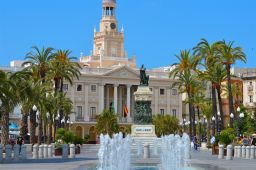
Cadiz is one of the oldest port cities in Europe. It experienced its heyday when Spain colonized the Americas and this is reflected in its XVIII century architecture and elegant squares with their distinctive character. As the administrative center of the province of Cadiz, many of these buildings are now used as government offices. Stroll through the narrow streets of the old town. It was built on a peninsula and you have sea views at virtually the end of every street, which helps you navigate the maze. The city has undergone a rejuvenation in recent years. It's vibrant, outward-facing and a place where everyone is welcome, especially in February when Carnival week is celebrated. Visit the excellent traditional tapa bars and flamenco venues to taste the real ambiance of Cadiz, as well as the fish market for the freshest of catches. The "golden" dome roof of the cathedral is the sight of this city with its yellow glazed tiles.
Jerez de la Frontera
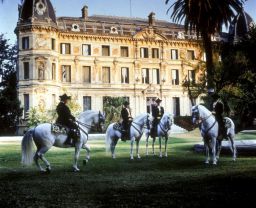
Jerez de la Frontera is the epitome of sherry and as you drive through the town you will discover the wine cellars with such famous names as Harveys, Sandemans and Osborne. The cellars can be visited for wine tastings - reservations are required. The sherry industry has historically been in the hands of dynasties, many of which were of English origin. Although the business is now in the hands of multinational companies, many influences of the old days are still present. Jerez is also famous for the Andalusian horse and its riding school. Visitors can enjoy an excellent horse show once a week. If flamenco is your passion, you will find the history of dance and song at the Centro Andaluz de Flamenco. Jerez is a city of contrasts with ugly skyscrapers in the suburbs, the historic center, the neighborhood of the gypsies and wealthy homes of the sherry barons.
El Puerto de Santa María
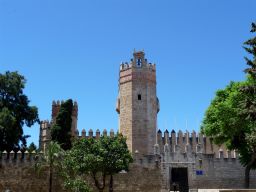
The sight of seafood offered in the street eateries is something to remember in this former fishing village.
It was here that Columbus launched his ship Santa Maria to discover America.
Visit the place to eat seafood and drink an ice-cold Fino or Manzanilla sherry, which is produced in this area. On the other side of the bay is Cadiz - one of the oldest or even the oldest city in Europe - which you can also reach by ferry. An interesting crossing of about 30 minutes, you can also do it the other way around from Cadiz to El Puerto de Santa Maria. El Puerto de Santa Maria is one of the three towns that make up the "Sherry Triangle". Bodegas line the banks of the Guadalete River and the hilly landscape is covered with vineyards. The bulls of Andalusia are raised in this environment for bullfighting, which is a religion for many people.
Vejer de la Frontera
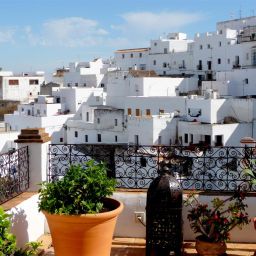
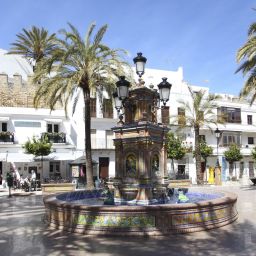
Since the Phoenicians, this white village with its dominant position on the top of a rock was a border post.
Considered one of the most beautiful white villages in Spain, it offers magnificent panoramic views of the Atlantic Ocean, the African Rif Mountains to the south, and the fertile fields and Alcornocales Natural Park to the north. With its deep-rooted Moorish past, the town has a maze of narrow streets, jumbled houses and whitewashed courtyards, all of which can tell their own story. It is one of the most attractive places of the famous pueblos blancos.
Drive up the hill and try to park in the newer part of town, as space is limited in the medieval section. Vejer came into fashion in recent years and good restaurants like El Jardin del Califa opened their doors. It is also worth exploring the real Andalusian cuisine in the cafes and bars. In the evening the place offers a charming and very romantic atmosphere.
Tarifa
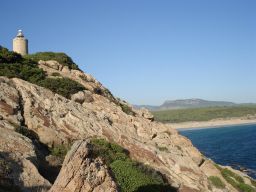
In Tarifa you have reached the southernmost point of Spain.
The Rif Mountains in northern Africa rise up on the other side of the Strait of Gibraltar, which is only 14 kilometers wide. At night, the lights of Tangier lend the horizon a fairy-tale quality. The city of Tarifa has a definite Moroccan influence with its narrow streets, architecture, and in its stores and restaurants.
The town is famous for its strong easterly winds, known as the "Levante", and the coastline has become a windsurfing paradise.
There is an enthusiasm and vibrant energy emanating from the windsurfers and kitesurfers who can be found here from all over the world all year round waiting for wind. It is absolutely hip and cool. The ferry port of Tarifa connects Spain with Tangier. With only a 35-minute crossing to Morocco, day trips are possible. Another special feature of this zone are the wind generators that supply the area and Morocco with sustainable energy.
Bolonia
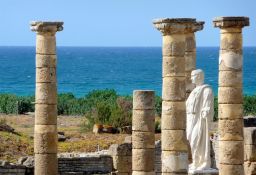
Halfway between the fishing town of Barbate and Tarifa, the road goes uphill from the N-340 and then down to the sea. This area has been described as "painted fields" dotted with wild flowers in the spring. In Bolonia is the Roman settlement called Baelo Claudio. Long before hippies, surfers and the vacationers, it was the Romans who recognized the charm of the region. In the second century B.C. they built what was then Baelo Claudia near the present-day village of Bolonia.
The new foundation quickly brought prosperity and developed into a hub for maritime trade with western North Africa. The settlement, which is not one of the best known Roman settlements in Europe, had success with tuna fishing and related activities - salting fish and making garum, one of the most sought-after fish sauces today. Excavations have uncovered a main street and marketplace, as well as temples, a basilica, a theater and stores. The site is simply spectacular with the azure sea, sand dunes and pine groves against the mountain backdrop.
What remains are a few walls, a few columns, some mosaics. And the view from the terrace of the Capitol Temple over the beach to the sea and across to Africa. These are the most extensive remains of a Roman city on the Iberian Peninsula. In recognition of its importance, a modern visitor center has been built that offers information via perfect screen displays that leave no room for boredom. It is definitely worth taking a detour to Bolonia.
Algarve
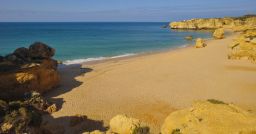
Using the excellent highway west of Seville, it is very easy to get to the Portuguese Algarve, where you will again encounter a different culture.
In summer, this area is the main tourist attraction of Portugal.
Be prepared for a lot of parties. The surroundings are beautiful with natural coves and golden beaches with their backdrop of sheer cliffs.
Exploring the hinterland, you'll come across castles and attractive villages with buildings painted in bright Mediterranean colors.
Conil de la Frontera
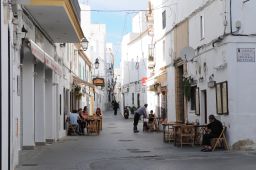
Conil de la Frontera - the white city directly on the sea - was once a small fishing village on the Costa de la Luz, which lived mainly from fishing and agriculture.
The small town has largely preserved its typical Andalusian flair and whoever strolls through the small winding streets today will discover dreamlike courtyards and beautiful squares.
Thanks to the picturesque location between pine forests and the Atlantic coast in the south of Andalusia, the sunny weather with its unforgettable light and the long golden sandy beaches, many tourists have taken Conil into their hearts and like to come back, whether for swimming, surfing, biking, hiking, horseback riding or to be pampered in beach bars and restaurants with local specialties.
Cape Trafalgar
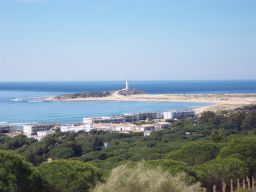
In 1805 it was the scene of the Battle of Trafalgar - one of the most significant battles in British naval history.
Admiral Lord Nelson, aboard HMS Victory, defeated the joint fleet of France and Spain off the Cape, sinking or capturing 18 of their galleons without losing a single British ship. It is said that the cannon blasts could be heard as far away as the mountains of Ronda.
The toll was enormous: the British lost 449 men and 1241 were wounded. On the French and Spanish side, 4408 men died and 2545 were wounded. One of the dead on the British side was Admiral Nelson himself, who was mortally wounded in the battle. Nelson is still a national hero, but in 1805 he was THE hero of the day. His body was soaked in rum and taken to Gibraltar before being transferred to London for a funeral ceremony at St. Paul Cathedral.
The limestone headland of the Cape of Trafalgar is now home to a lighthouse that rises against a backdrop of pine groves. Other magnificent trees such as wild olives, cypresses, myrtles and maritime junipers, as well as the delicate fragrance of conifers, herbs and flowers, invite visitors to wander through the area.
Sevilla
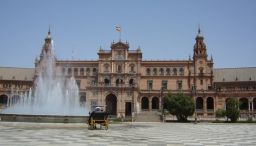
There is no better place to capture the passion of Andalusia than in this magnificent city. Flamenco music and dance, tapas bars, bullfighting, Moorish architecture, elegant stores, beautiful women... one day is not enough in the provincial capital. The Easter processions of Semana Santa are legendary. Following the processions, the Feria of Seville takes place. A week of partying that concentrates the joie de vivre of the people of Seville - they call it fire in the blood. The Jacaranda trees are in full bloom, an intoxicating scent of orange blossoms and romance are in the air. Visit the world's largest cathedral by volume, the Moorish Alcázar Palace and the Barrio Santa Cruz district. Nightlife and entertainment, shopping, food and drink are available for every budget and taste.
Marokko
After a mere 35-minute journey through the Strait of Gibraltar, you'll arrive in another world. Amid the hustle and bustle of Tangier's crowded market, you'll be transported back in time in the souk. Buy spices and olives, sip mint tea, and haggle over a rug or ceramic plate. Hotel Minzah, a bastion of imperialism, is a quiet haven for a refreshing drink. To truly appreciate the city's charms in a day, a guide will open many doors for you*. Tangier has a fascinating past, when it was an international zone and a playground for eccentric millionaires like Woolworth heiress Barbara Hutton. Writers like Paul Bowles and Tennessee Williams lived here. The city is rich in color, tradition and culture.
* Aziz Begdouri is recommended (aziztour@hotmail.com).

